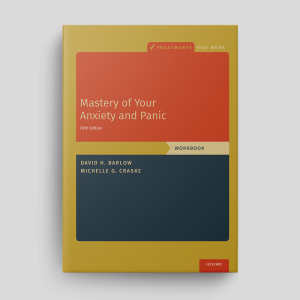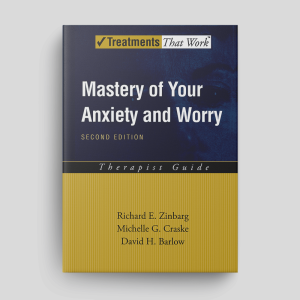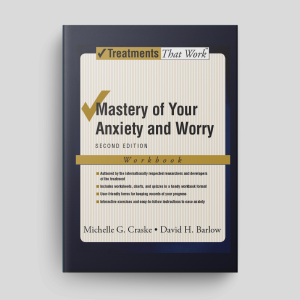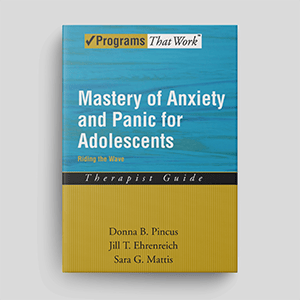Mastery Of Your Anxiety And Panic (Fifth Edition): Therapist Guide
This therapist guide provides a structured cognitive behavioral treatment (CBT) program for panic disorder and agoraphobia. It incorporates the latest research on inhibitory learning and exposure-based interventions, offering clinicians a step-by-step framework for delivering effective, evidence-based care.
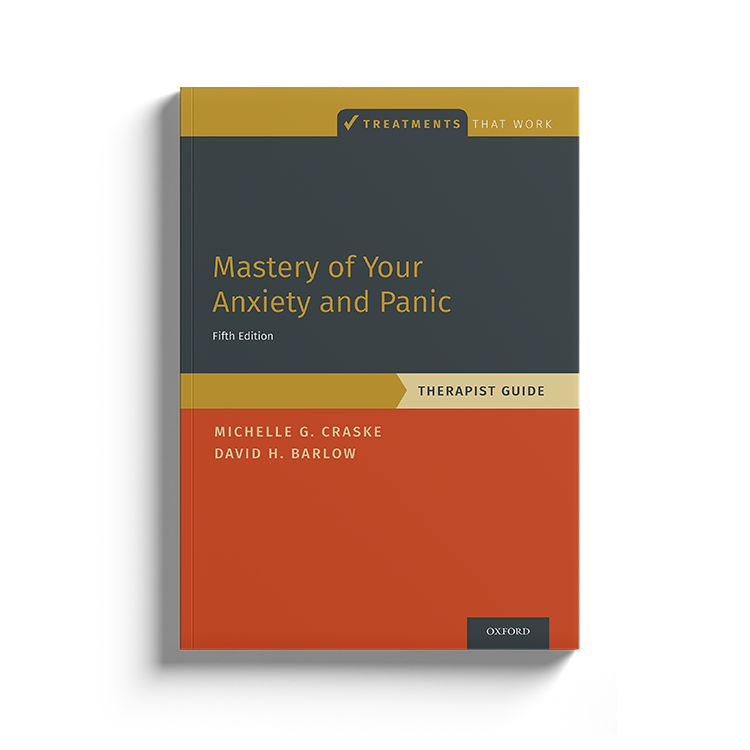
Download or send
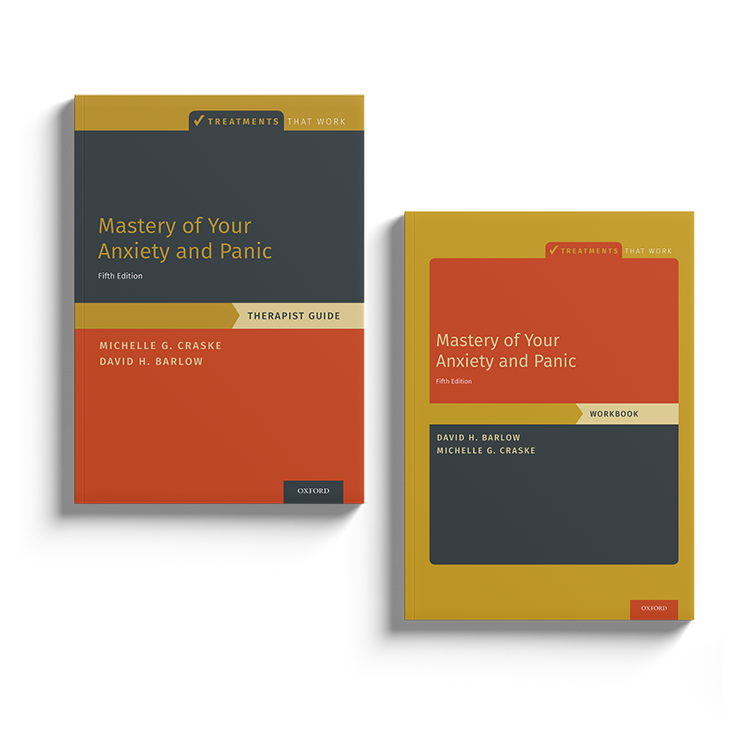
Overview
Panic disorder and agoraphobia can significantly impact people's ability to function. This therapist guide is part of the mastery of your anxiety and panic (MAP) program, which provides a structured approach to treatment. Now in its fifth edition, the program integrates the latest advances in exposure therapy, cognitive restructuring, and inhibitory learning principles.
This guide outlines a session-by-session treatment plan, providing detailed instructions for implementing exposure and response prevention (ERP), interoceptive exposure, and cognitive restructuring techniques. It also addresses therapist challenges, client resistance, and variations in treatment pacing.
Why use this resource?
This guide is an essential resource for clinicians working with individuals experiencing panic disorder and agoraphobia. It provides:
- Evidence-based strategies – incorporates the latest research on inhibitory learning and exposure therapy.
- Structured approach – offers a session-by-session treatment plan with detailed interventions.
- Adaptability – allows for individualized pacing to match client progress.
- Therapist guidance – includes case examples, troubleshooting techniques, and recommendations for managing treatment challenges.
Key benefits
Structure
Flexibility
Effectiveness
Integration
What difficulties is this for?
Panic Disorder
Characterized by recurrent unexpected panic attacks and persistent worry about future attacks.
Panic Attacks
Acute episodes of intense anxiety marked by a rapid onset.
Agoraphobia
Marked by intense fear of situations where escape may be difficult.
Integrating it into your practice
Educate
Introduce clients to the CBT model for panic disorder and agoraphobia.
Assess
Use structured interviews and self-report measures to evaluate symptom severity.
Track
Implement symptom monitoring to observe patterns and progress.
Expose
Guide clients through interoceptive and situational exposure exercises.
Reframe
Teach cognitive restructuring to challenge catastrophic interpretations of symptoms.
Review
Evaluate client progress and adjust treatment plans as needed.
Theoretical background and therapist guidance
The treatment approach outlined in this guide is rooted in cognitive behavioral therapy (CBT) principles and has been rigorously tested in multiple clinical trials. It integrates inhibitory learning models, emphasizing the role of exposure in promoting new learning rather than mere habituation.
The guide details how exposure helps clients tolerate discomfort while disconfirming catastrophic beliefs about bodily sensations and feared situations. By systematically confronting their fears, clients learn that their anxiety does not lead to the feared consequences, reducing avoidance behaviors over time.
A related component is interoceptive exposure, which involves deliberately inducing feared physical sensations (e.g., dizziness, breathlessness) to help clients habituate to these experiences. This is particularly beneficial for individuals with panic disorder who misinterpret bodily sensations as dangerous.
Cognitive restructuring techniques are also emphasized, helping clients reframe anxious thoughts and challenge misinterpretations of physical sensations. The therapist guide provides troubleshooting strategies for common challenges, such as client resistance, slow treatment progress, and comorbid conditions.
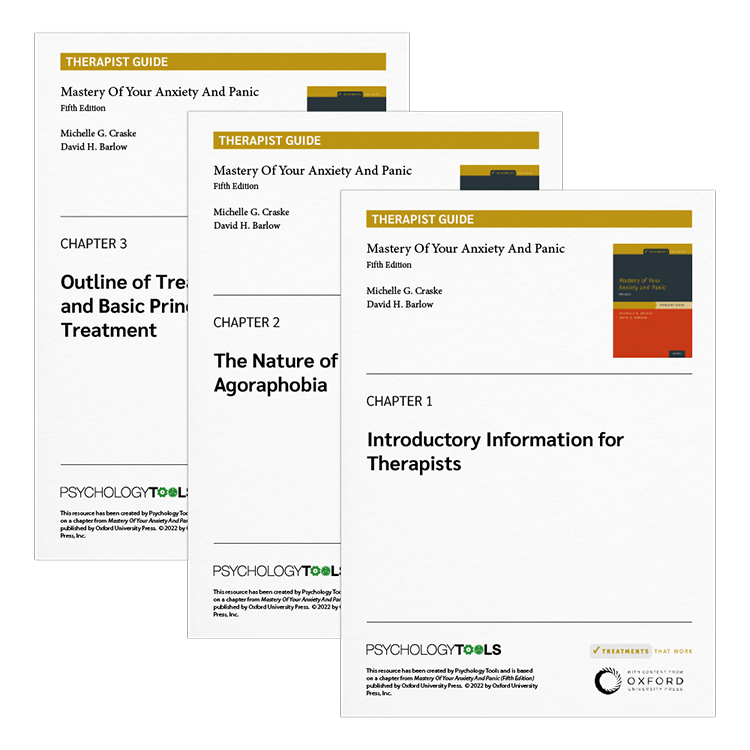
What's inside
- Step-by-step session outlines for conducting CBT for panic disorder and agoraphobia.
- Detailed exposure therapy guidance, including interoceptive and situational exposure.
- Cognitive restructuring exercises for challenging anxious thinking.
- Worksheets and assessment tools for tracking progress.
- Therapist troubleshooting tips for managing treatment resistance.
FAQs
How this resource helps improve clinical outcomes
- Encourages long-term anxiety reduction through exposure-based learning.
- Helps clients develop resilience to panic symptoms.
- Reduces avoidance behaviors that maintain anxiety.
- Provides a structured framework to maximize therapy effectiveness.
- Equips therapists with strategies to tailor treatment to individual needs.
Clinicians who use this resource also use
References and further reading
- Barlow, D. H., & Craske, M. G. (2022). Mastery of Your Anxiety and Panic: Therapist Guide (5th ed.). Oxford University Press.
- Craske, M. G., Wolitzky-Taylor, K. B., & Barlow, D. H. (2021). Inhibitory learning and exposure therapy: Enhancing treatment outcomes for anxiety disorders. Clinical Psychology Review, 87, 102037.
- Foa, E. B., & Kozac, M. J. (1986). Emotional processing of fear: Exposure to corrective information. Psychological Bulletin, 99, 20-35.
- Otto, M. W., & Pollack, M. H. (2009). Stopping Anxiety Medication: Therapist Guide. Oxford University Press.
- NICE (2019). Generalized anxiety disorder and panic disorder in adults: Management. National Institute for Health and Care Excellence Clinical Guideline.
Just enter your name and email address, and we'll send you Mastery Of Your Anxiety And Panic (Fifth Edition): Therapist Guide (English US) straight to your inbox. You'll also receive occasional product update emails wth evidence-based tools, clinical resources, and the latest psychological research.
Product
Company
Support
- © 2025 Psychology Tools. All rights reserved
- Terms & Conditions
- Privacy Policy
- Cookies Policy
- Disclaimer
Working...
We value your privacy
This site uses strictly necessary cookies to function. We do not use cookies for analytics, marketing, or tracking purposes. By clicking “OK”, you agree to the use of these essential cookies. Read our Cookie Policy
